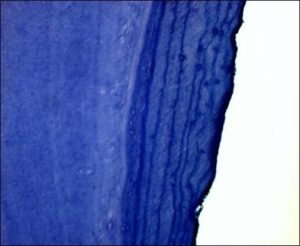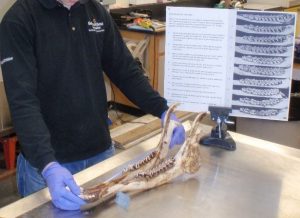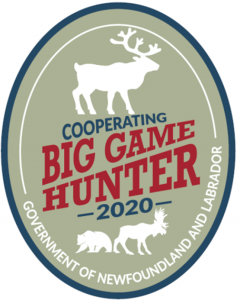Successful big game hunters will be required to submit the lower jawbone of a moose or caribou that has been harvested under their licence. A jawbone tag will included in your big game licence package. Please indicate the sex of the animal you have harvested on the tag. Jawbone drop boxes will be established in 48 locations throughout the province. To view all locations on a map, click here.


Wear aging estimates age based on the visible wear of the molar teeth. Cementum age interpretation involves counting the layers of bony material deposited each year on the root of the tooth. These layers appear like rings on a tree as depicted below. Incisor teeth, which are extracted from the lower jawbone and analyzed, give us an accurate age. Knowing the age structure of animals can help determine the health and status of the population. For example, hunters often harvest yearling and two-year old moose, while few calves and old animals are harvested. Other than calves, the age distribution is assumed to resemble the age of the moose population. If there are many young and prime breeding animals present, the population is probably increasing. If there are many older animals, it is likely that birth rates are low and the population is declining.
When you submit your jawbones, please keep the following in mind:
- Samples should not be mailed.

A properly cleaned jawbone is important for getting accurate measurements. - Remove as much skin and flesh as possible.
- Keep in a well-ventilated, cool area.
- Do not wrap in plastic to avoid the growth of bacteria.
- Firmly attach the jawbone tag before submitting, and remember to punch out the tab that indicates the sex of the animal harvested.
Cooperating Big Game Hunter Crests
Hunters that submit a lower jawbone from a harvested big game animal will receive a cooperating big game hunter crest as a token of appreciation (partner licences will receive two crests). The efforts of hunters to supply data through jawbone submissions are essential to establish the health and status of moose and caribou populations throughout the province. Thanks to hunting public, age and growth records in the provincial jawbone database represent one of the largest datasets known among North American wildlife management agencies, amassing over 168,000 entries.
